Elementary cellular automaton
In mathematics and computability theory, an elementary cellular automaton is a one-dimensional cellular automaton where there are two possible states (labeled 0 and 1) and the rule to determine the state of a cell in the next generation depends only on the current state of the cell and its two immediate neighbors. As such it is one of the simplest possible models of computation. Nevertheless, there is an elementary cellular automaton (rule 110, defined below) which is capable of universal computation.
The numbering system
There are 8 = 23 possible configurations for a cell and its two immediate neighbors. The rule defining the cellular automaton must specify the resulting state for each of these possibilities so there are 256 = 223 possible elementary cellular automata. Stephen Wolfram proposed a scheme, known as the Wolfram code, to assign each rule a number from 0 to 255 which has become standard. Each possible current configuration is written in order, 111, 110, ..., 001, 000, and the resulting state for each of these configurations is written in the same order and interpreted as the binary representation of an integer. This number is taken to be the rule number of the automaton. For example, 110d=96d+14d written in binary is 011011102. So rule 110 is defined by the transition rule:
| 111 | 110 | 101 | 100 | 011 | 010 | 001 | 000 | current pattern | P=(L,C,R) |
|---|---|---|---|---|---|---|---|---|---|
| 0 | 1 | 1 | 0 | 1 | 1 | 1 | 0 | new state for center cell | N110d=(C+R+C*R+L*C*R)%2 |
Reflections and complements
Although there are 256 possible rules, many of these are trivially equivalent to each other up to a simple transformation of the underlying geometry. The first such transformation is reflection through a vertical axis and the result of applying this transformation to a given rule is called the mirrored rule. These rules will exhibit the same behavior up to reflection through a vertical axis, and so are equivalent in a computational sense.
For example, if the definition of rule 110 is reflected through a vertical line, the following rule (rule 124) is obtained:
| 111 | 110 | 101 | 100 | 011 | 010 | 001 | 000 | current pattern | P=(L,C,R) |
|---|---|---|---|---|---|---|---|---|---|
| 0 | 1 | 1 | 1 | 1 | 1 | 0 | 0 | new state for center cell | N112d+12d=124d=(L+C+L*C+L*C*R)%2 |
Rules which are the same as their mirrored rule are called amphichiral. Of the 256 elementary cellular automata, 64 are amphichiral.
The second such transformation is to exchange the roles of 0 and 1 in the definition. The result of applying this transformation to a given rule is called the complementary rule. For example, if this transformation is applied to rule 110, we get the following rule
| current pattern | 000 | 001 | 010 | 011 | 100 | 101 | 110 | 111 |
|---|---|---|---|---|---|---|---|---|
| new state for center cell | 1 | 0 | 0 | 1 | 0 | 0 | 0 | 1 |
and, after reordering, we discover that this is rule 137:
| current pattern | 111 | 110 | 101 | 100 | 011 | 010 | 001 | 000 |
|---|---|---|---|---|---|---|---|---|
| new state for center cell | 1 | 0 | 0 | 0 | 1 | 0 | 0 | 1 |
There are 16 rules which are the same as their complementary rules.
Finally, the previous two transformations can be applied successively to a rule to obtain the mirrored complementary rule. For example, the mirrored complementary rule of rule 110 is rule 193. There are 16 rules which are the same as their mirrored complementary rules.
Of the 256 elementary cellular automata, there are 88 which are inequivalent under these transformations.
Single 1 histories
One method used to study these automata is to follow its history with an initial state of all 0s except for a single cell with a 1. When the rule number is even (so that an input of 000 does not compute to a 1) it makes sense to interpret state at each time, t, as an integer expressed in binary, producing a sequence a(t) of integers. In many cases these sequences have simple, closed form expressions or have a generating function with a simple form. The following rules are notable:
Rule 28
The sequence generated is 1, 3, 5, 11, 21, 43, 85, 171, ... (sequence A001045 in the OEIS). This is the sequence of Jacobsthal numbers and has generating function
- .
It has the closed form expression
Note that rule 156 generates the same sequence.
Rule 50
The sequence generated is 1, 5, 21, 85, 341, 1365, 5461, 21845, ... (sequence A002450 in the OEIS). This has generating function
- .
It has the closed form expression
- .
Note that rules 58, 114, 122, 178, 186, 242 and 250 generate the same sequence.
Rule 54
The sequence generated is 1, 7, 17, 119, 273, 1911, 4369, 30583, ... (sequence A118108 in the OEIS). This has generating function
- .
It has the closed form expression
- .
Rule 60
The sequence generated is 1, 3, 5, 15, 17, 51, 85, 255, ... (sequence A001317 in the OEIS). This can be obtained by taking successive rows of Pascal's triangle modulo 2 and interpreting them as integers in binary, which can be graphically represented by a Sierpinski triangle.
Rule 90
The sequence generated is 1, 5, 17, 85, 257, 1285, 4369, 21845, ... (sequence A038183 in the OEIS). This can be obtained by taking successive rows of Pascal's triangle modulo 2 and interpreting them as integers in base 4. Note that rules 18, 26, 82, 146, 154, 210 and 218 generate the same sequence.
Rule 94
The sequence generated is 1, 7, 27, 119, 427, 1879, 6827, 30039, ... (sequence A118101 in the OEIS). This can be expressed as
- .
This has generating function
- .
Rule 102
The sequence generated is 1, 6, 20, 120, 272, 1632, 5440, 32640, ... (sequence A117998 in the OEIS). This is simply the sequence generated by rule 60 (which is its mirror rule) multiplied by successive powers of 2.
Rule 110
Rule 150
The sequence generated is 1, 7, 21, 107, 273, 1911, 5189, 28123, ... (sequence A038184 in the OEIS). This can be obtained by taking the coefficients of the successive powers of (1+x+x2) modulo 2 and interpreting them as integers in binary.
Rule 158
The sequence generated is 1, 7, 29, 115, 477, 1843, 7645, 29491, ... (sequence A118171 in the OEIS). This has generating function
- .
Rule 188
The sequence generated is 1, 3, 5, 15, 29, 55, 93, 247, ... (sequence A118173 in the OEIS). This has generating function
- .
Rule 190
The sequence generated is 1, 7, 29, 119, 477, 1911, 7645, 30583, ... (sequence A037576 in the OEIS). This has generating function
- .
Rule 220
The sequence generated is 1, 3, 7, 15, 31, 63, 127, 255, ... (sequence A000225 in the OEIS). This is the sequence of Mersenne numbers and has generating function
- .
It has the closed form expression
- .
Note that rule 252 generates the same sequence.
Rule 222
The sequence generated is 1, 7, 31, 127, 511, 2047, 8191, 32767, ... (sequence A083420 in the OEIS). This is every other entry in the sequence of Mersenne numbers and has generating function
- .
It has the closed form expression
- .
Note that rule 254 generates the same sequence.
Random initial state
A second way to investigate the behavior of these automata is to examine its history starting with a random state. This behavior can be better understood in terms of Wolfram classes. Wolfram gives the following examples as typical rules of each class.[1]
- Class 1: Cellular automata which rapidly converge to a uniform state. Examples are rules 0, 32, 160 and 232.
- Class 2: Cellular automata which rapidly converge to a repetitive or stable state. Examples are rules 4, 108, 218 and 250.
- Class 3: Cellular automata which appear to remain in a random state. Examples are rules 22, 30, 126, 150, 182.
- Class 4: Cellular automata which form areas of repetitive or stable states, but also form structures that interact with each other in complicated ways. An example is rule 110. Rule 110 has been shown to be capable of universal computation.[2]
Each computed result is placed under that results' source creating a two-dimensional representation of the system's evolution. The 88 inequivalent rules are as follows, evolved from random initial conditions:
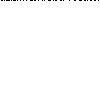 Rule 0
Rule 0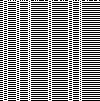 Rule 1
Rule 1 Rule 2
Rule 2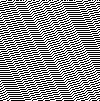 Rule 3
Rule 3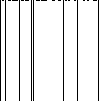 Rule 4
Rule 4 Rule 5
Rule 5 Rule 6
Rule 6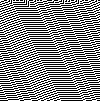 Rule 7
Rule 7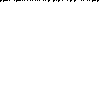 Rule 8
Rule 8 Rule 9
Rule 9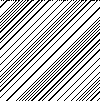 Rule 10
Rule 10 Rule 11
Rule 11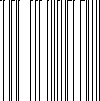 Rule 12
Rule 12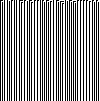 Rule 13
Rule 13 Rule 14
Rule 14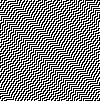 Rule 15
Rule 15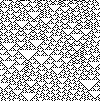 Rule 18
Rule 18 Rule 19
Rule 19 Rule 22
Rule 22 Rule 23
Rule 23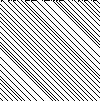 Rule 24
Rule 24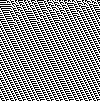 Rule 25
Rule 25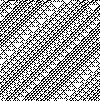 Rule 26
Rule 26 Rule 27
Rule 27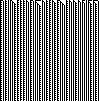 Rule 28
Rule 28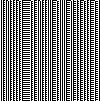 Rule 29
Rule 29
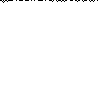 Rule 32
Rule 32 Rule 33
Rule 33 Rule 34
Rule 34 Rule 35
Rule 35 Rule 36
Rule 36 Rule 37
Rule 37 Rule 38
Rule 38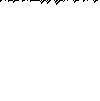 Rule 40
Rule 40 Rule 41
Rule 41 Rule 42
Rule 42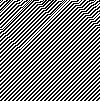 Rule 43
Rule 43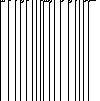 Rule 44
Rule 44 Rule 45
Rule 45 Rule 46
Rule 46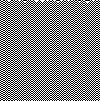 Rule 50
Rule 50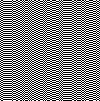 Rule 51
Rule 51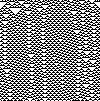 Rule 54
Rule 54 Rule 56
Rule 56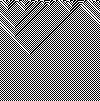 Rule 57
Rule 57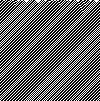 Rule 58
Rule 58 Rule 60
Rule 60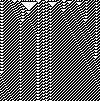 Rule 62
Rule 62 Rule 72
Rule 72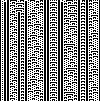 Rule 73
Rule 73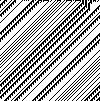 Rule 74
Rule 74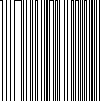 Rule 76
Rule 76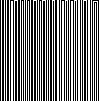 Rule 77
Rule 77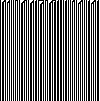 Rule 78
Rule 78
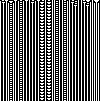 Rule 94
Rule 94 Rule 104
Rule 104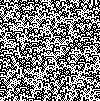 Rule 105
Rule 105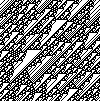 Rule 106
Rule 106 Rule 108
Rule 108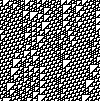
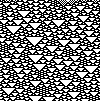 Rule 122
Rule 122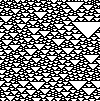 Rule 126
Rule 126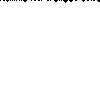 Rule 128
Rule 128 Rule 130
Rule 130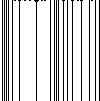 Rule 132
Rule 132 Rule 134
Rule 134 Rule 136
Rule 136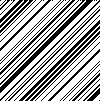 Rule 138
Rule 138 Rule 140
Rule 140 Rule 142
Rule 142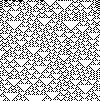 Rule 146
Rule 146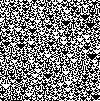 Rule 150
Rule 150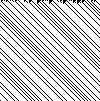 Rule 152
Rule 152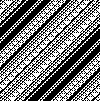 Rule 154
Rule 154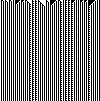 Rule 156
Rule 156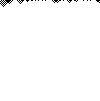 Rule 160
Rule 160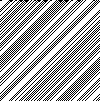 Rule 162
Rule 162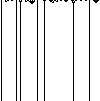 Rule 164
Rule 164 Rule 168
Rule 168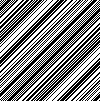 Rule 170
Rule 170 Rule 172
Rule 172 Rule 178
Rule 178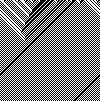
 Rule 200
Rule 200 Rule 204
Rule 204 Rule 232
Rule 232
Unusual cases
In some cases the behavior of a cellular automaton is not immediately obvious. For example, for Rule 62, interacting structures develop as in a Class 4. But in these interactions at least one of the structures is annihilated so the automaton eventually enters a repetitive state and the cellular automaton is Class 2.[3]
Rule 73 is Class 2[4] because any time there are two consecutive 1s surrounded by 0s, this feature is preserved in succeeding generations. This effectively creates walls which block the flow of information between different parts of the array. There are a finite number of possible configurations in the section between two walls so the automaton must eventually start repeating inside each section, though the period may be very long if the section is wide enough. These walls will form with probability 1 for completely random initial conditions. However, if the condition is added that the lengths of runs of consecutive 0s or 1s must always be odd, then the automaton displays Class 3 behavior since the walls can never form.
Rule 54 is Class 4,[5] but it remains unknown whether it is capable of universal computation. Interacting structures form, but structures that are useful for computation have yet to be found.[6]
References
- ↑ Stephan Wolfram, A New Kind of Science p223 ff.
- ↑ Rule 110 - Wolfram|Alpha
- ↑ Rule 62 - Wolfram|Alpha
- ↑ Rule 73 - Wolfram|Alpha
- ↑ Rule 54 - Wolfram|Alpha
- ↑ A New Kind of Science p697
External links
| Wikimedia Commons has media related to Elementary cellular automata. |
- "Elementary Cellular Automata" at the Wolfram Atlas of Simple Programs
- Alternative elementary cellular automaton demonstration in JavaScript
- 32 bytes long MS-DOS executable drawing by cellular automaton (Rule 110 by default)
- A showcase of all the rules picked at random